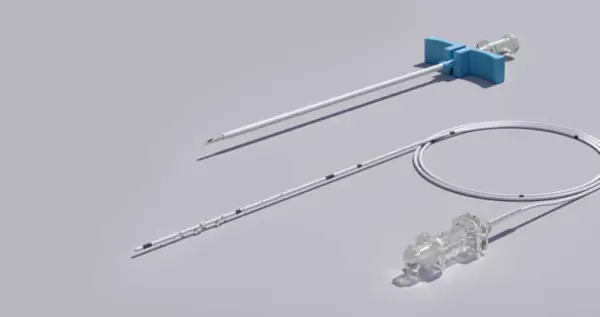
Continuous Wound Infiltration Systems. The InfiltraLong catheter developed by PAJUNK® is a se...
Portal and digital medical technology fair of the largest MedTech cluster in Germany

An epidural caudal anesthesia is an alternative to spinal anesthesia. The procedure is performed by injecting bupivacaine or another anesthetic into the sacral canal. The depth of the canal varies, but the mean volume is approximately 33 mL. The needle is advanced to a point just a few millimeters above the dural sac, with a slight snap and an aspiration sound. After reaching the ventral wall of the sacral canal, the needle is withdrawn and inserted more cranially. Injection of saline can also confirm proper positioning. Using a saline bolus can detect cranial spread or posterior displacement of the dura. If there is no dural displacement, the patient may need an intrathecal or intravascular anesthetic.
The method involves a small opening at the base of the spine that is accessed by a spinal needle. The needle then spreads into the epidural space. Compared to other methods, this technique is more successful and has lower complications. However, it requires advanced skills and expertise. It is also associated with greater patient safety than the other methods. There are several advantages to the technique. If performed correctly, epidural caudal anesthesia can be safely administered.
The technique has been described in various types of surgery, including general, trauma, and urological procedures. It has also been used in a variety of specialized surgeries, including breast and gynecologic surgeries. The clinical trials show that this technique provides excellent anesthesia conditions much faster than a single epidural block alone. In certain cases, an epidural catheter may be used to supplement subarachnoid anesthesia.
The patient must fast the night before the procedure. X-rays are taken prior to the procedure. The patient is placed on a gurney and has his or her abdomen supported. The needle is inserted into the sacral hiatus using a needle that is placed in the caudal area under x-ray guidance. A contrast dye is then injected into the epidural space to confirm proper placement.
An epidural catheter is inserted through the sacral caudal canal. The needle is inserted deep into the spinal canal. A patient's blood supply is connected to the spinal cord. The catheter is positioned near the spine. A doctor must follow certain guidelines to avoid complications. It is important not to use anesthetics that affect the central nervous system. A needle should be able to reach the epidural nerve with enough force to ensure comfort.
Injecting a caudal steroid can provide a pain-free back region. A doctor may inject a steroid into the caudal space. A second method is caudal anaesthesia. The doctor injects a liquid into the sacudras, which is the epidural anaesthesia. The nerve block is a temporary anesthetic. It is usually given after the surgeon completes a surgery.
Become a digital exhibitor yourself in the online portal of the largest and best-known MedTech cluster region in Germany and inform the world of medical technology about your products and services as well as about news, events and career opportunities.
With an attractive online profile, we will help you to present yourself professionally on our portal as well as on Google and on social media.